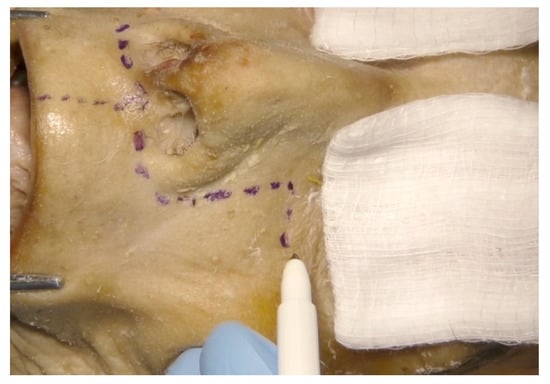JCM, Vol. 13, Pages 6798: Anatomical Measurements of the Malar Bone for Safe Zygomatic Implant Placement: A Study on Donated Bodies
Journal of Clinical Medicine doi: 10.3390/jcm13226798
Authors:
Carlo Barausse
Pietro Felice
Roberto Pistilli
Gerardo Pellegrino
Lorenzo Bonifazi
Subhi Tayeb
Antonietta Fazio
Maria Vittoria Marvi
Lucia Manzoli
Stefano Ratti
Background: The malar bone provides an anchorage point for zygomatic implants, avoiding invasive reconstructive surgeries in the fixed rehabilitation of fully edentulous and severely atrophic maxillae. The limited bone volume, however, requires precise implant placement to prevent complications related to nearby anatomical structures. This observational cross-sectional study aims to measure the malar and zygomatic arch bones and their distances from critical anatomical landmarks to guide surgeons in safe zygomatic implant placement. Methods: Dissections were performed bilaterally on 29 heads from human donated bodies in a cross-sectional observational study. Key landmarks evaluated include the infraorbital foramen (IF), pyriform nasal aperture (PNA), infraorbital margin (IM), zygomaticofacial foramen (ZFF), anterior end (A), and the most protruding point of the zygomatic arch (B). Measurements included IF-PNA, IF-IM, IF-ZFF, ZFF-IM, A-B, and orbital floor depth (OFD). Results: Significant findings showed IF-PNA was greater in males (18.66 ± 2.63 mm, p = 0.001), and IF-ZFF varied between sides (26.72 ± 8.7 mm, p = 0.002). ZFF-IM was larger in males (7.43 ± 2.09 mm, p < 0.001). Heights and thicknesses were also assessed, with significant side differences observed. Conclusions: These findings underscore the importance of understanding precise anatomical distances for successful implant placement. The study provides essential data to enhance surgical planning and training, ensuring safer procedures and minimizing the risk of complications.
Source link
Carlo Barausse www.mdpi.com

